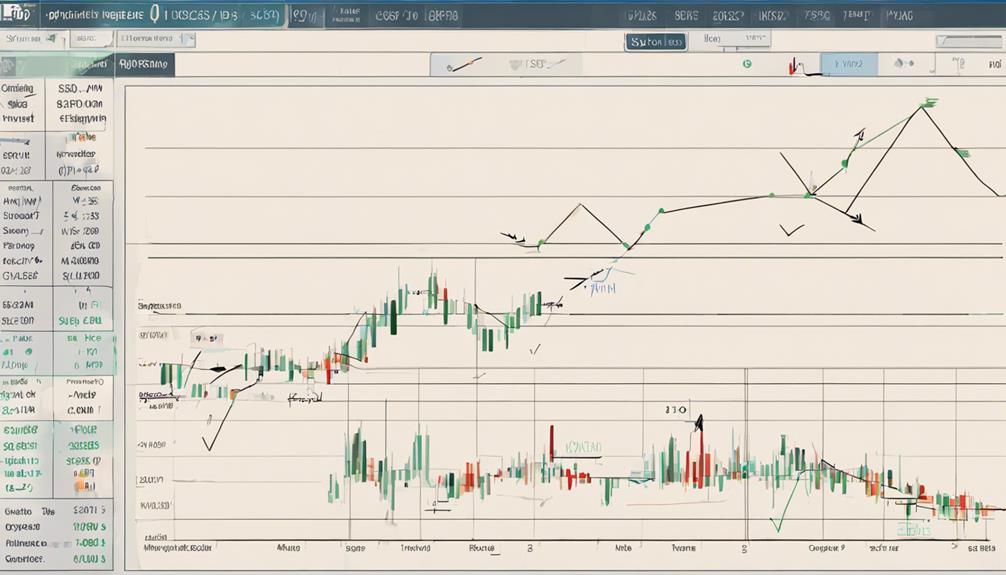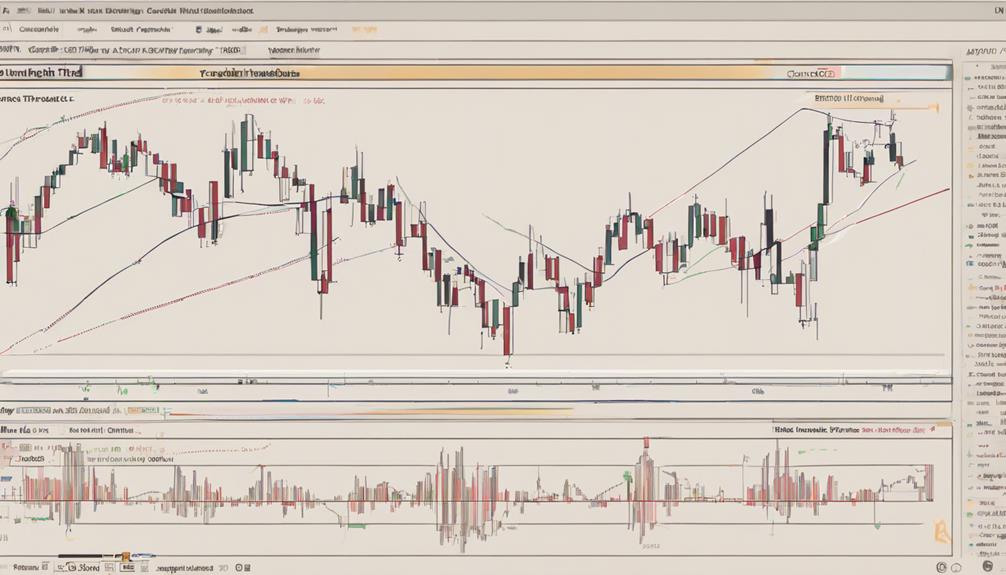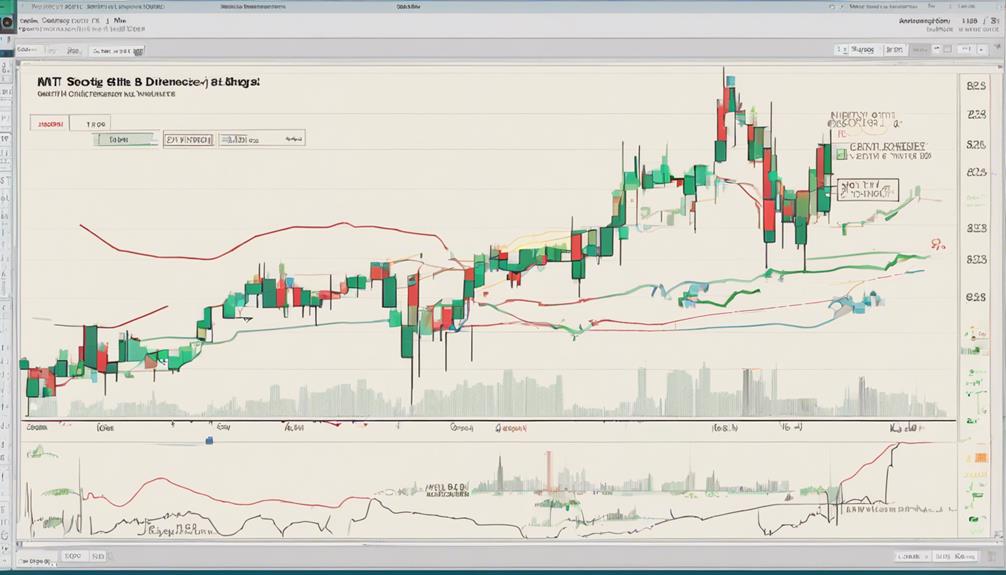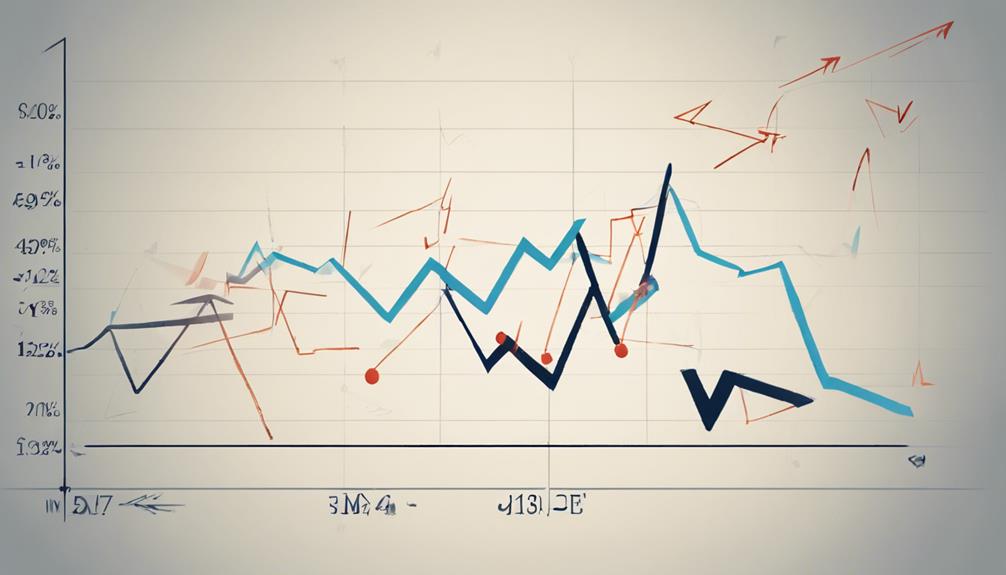When looking at a stock's momentum indicator like the Relative Strength Index (RSI), you might wonder how to effectively interpret its signals for your trading decisions. Understanding how to use these indicators can be a game-changer in your investment strategy.
By grasping the nuances of momentum indicators, you can gain valuable insights that may help you make more informed choices when it comes to buying or selling stocks.
Understanding Momentum Indicators
To understand momentum indicators effectively, you must grasp how they measure a stock's current price trend continuation by calculating the rate of change in the stock's price over time. These indicators utilize the closing price of a specific period to gauge the strength of price movements. Investors use momentum indicators to pinpoint potential entry and exit points in the market.
Crossing above or below the zero line on a momentum indicator can signal overbought or oversold conditions, providing insight into potential trading opportunities. By incorporating filters like price patterns or market trends, you can refine signals generated by momentum indicators and confirm a price action before making trading decisions.
Understanding these concepts is crucial for utilizing momentum indicators successfully in your trading strategies.
Key Momentum Indicator Calculations

Understanding how to calculate key momentum indicators involves comparing the current closing price with the closing price from a specified number of periods ago. Here are key calculations to consider:
- Subtract the closing price from a specified number of periods ago from the current closing price to determine momentum.
- Plot Momentum Indicator values on a chart based on price differences over time.
- Measure the rate of change in a stock's price to identify the current price trend continuation.
- Crossing above or below the zero line on the Momentum Indicator can indicate potential entry or exit points in trading strategies.
Practical Application of Momentum Indicators

When applying momentum indicators like the Momentum Indicator in trading, consider the current and past prices to assess market momentum effectively. The Momentum Indicator calculates momentum by comparing the current closing price to a specific past price, giving insight into the speed of price changes.
Traders utilize this information to determine trends, identify potential entry or exit points, and evaluate the strength of a trend. By analyzing the rate of price change, traders can anticipate potential shifts in the market. These indicators are valuable tools in technical analysis across various markets like stocks, Forex, commodities, and cryptocurrencies.
Understanding how momentum indicators work can enhance your trading strategies and aid in making informed decisions.
Interpretation of Momentum Indicator Signals

Consider the momentum indicator signals as crucial indicators for potential entry and exit points in your trading strategy.
- When the momentum indicator crosses above the zero line, it may signal entry points for traders.
- Holding a position while the momentum indicator remains above zero could be a strategic move.
- Exiting a position might be advisable when the momentum indicator crosses below the zero line.
- Utilizing additional conditions to filter signals can help validate the reliability of momentum indicator crosses.
Tips for Effective Momentum Indicator Usage

For effective utilization of momentum indicators in trading, ensure a thorough understanding of their key functions and applications. Implement the 100 Line Cross strategy to generate buy/sell signals based on the momentum indicator crossing the 100 line.
Utilize the divergence strategy to validate momentum indicator signals by comparing price and indicator movements. Consider filtering signals according to the current market trend to avoid false indications.
Develop effective trading strategies by experimenting with different moving average lengths and settings in conjunction with the momentum indicator. By incorporating these techniques, you can enhance your ability to interpret and act upon market momentum effectively.
What are the Key Benefits of Using Momentum Indicators for Beginners?
For beginners, choosing momentum indicators right can provide several key benefits. They can help identify the strength of a trend, potential entry and exit points, and overbought or oversold conditions. Additionally, these indicators can assist in confirming price movements, which can be valuable for making informed trading decisions.
Frequently Asked Questions
What Are the Best Settings for the Momentum Indicator?
For the Momentum Indicator, consider adjusting settings based on your trading style. Shorter periods like 10 or 12 offer quick signals for day trading, while longer periods like 20 or 30 suit swing or trend trading.
What Is the Best Indicator to Catch Momentum?
To catch momentum effectively, consider using the Stochastic Oscillator. It helps you identify potential market shifts. Combining multiple indicators like RSI and MACD can offer a well-rounded perspective for making informed trading decisions.
What Is the Best Indicator for Beginners?
For beginners, the Relative Strength Index (RSI) is a top choice. It's simple, effective in spotting overbought or oversold conditions, and versatile across markets. RSI helps confirm trends, predict reversals, and generate buy/sell signals.
How Do You Trade With Squeeze Momentum Indicator?
So, you want to trade with the Squeeze Momentum Indicator? Watch for those squeezes in Bollinger Bands indicating potential breakouts. When it signals, consider your entry or exit points wisely for profitable trades.
Conclusion
In conclusion, mastering momentum indicators can enhance your trading skills by providing valuable insights into stock price trends. By understanding key calculations and interpreting signals effectively, you can make informed decisions on entry and exit points.
Remember to use filters to refine your strategy and avoid overtrading. With practice and patience, you'll soon be navigating the market with the precision of a seasoned pro.
Keep honing your skills, and watch your trading game soar to new heights!
